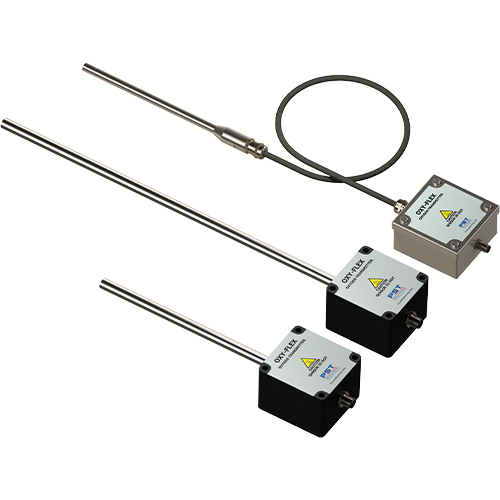The results of incomplete combustion can include fuel waste, an increased level of toxic emissions and potentially damage to your combustion system resulting in environmental and financial impact. The overheads of fuel consumption and system availability are high in large scale industrial and commercial boilers/furnaces. In order to see return of investment and minimize running costs the operation must be kept at peak efficiency.
All combustion processes require the correct air to fuel ratio of fuel and oxygen. Incomplete combustion creates fuel waste, an increased level of toxic emissions and potential damage, affecting the overall performance and operational costs of the boiler system. Environmental and financial impacts can be significant.
Boiler Combustion Efficiency

|
The high overhead costs of fuel consumption are an issue for large-scale industrial and commercial boilers. To make sure that there is enough return on investment, operations should be kept at peak efficiency which will also keep running cost low. |
Complete combustion requires the ideal ratio of fuel to air. This process is optimised and maintained by measuring the output oxygen level of the exhaust/flue gas by using an oxygen gas sensor in a closed loop feedback system to the boiler controller for regulating the input mix. This is especially useful when the quality of fuel supplied may vary (i.e. gases from different sources).
Provided the air flow and the temperature is sufficient, the fuel will release high levels of energy while waste carbon molecules are oxidized to form gaseous compounds of low toxicity. This can be assured using flue gas sensors capable of monitoring the levels of oxygen released from the furnace.
|
Advanced gas sensors like the OXY-FLEX Series Oxygen Analyser from PST, can eliminate elements of inefficiency from your boiler system by measuring the level of oxygen in flue gases and feeding data back to the boiler controller. This enables in situ monitoring of combustion boiler efficiency and regulation of the fuel and air flow input ratios to optimize combustion in real-time. The gas sensor uses a zirconium dioxide sensing element that can readily withstand the extreme temperatures of boiler flues up to a maximum operating temperature of 400°C (752°F). It can be configured to three distinct output measuring ranges which can be communicated via 4-20mA,0-10Vdc and RS232 outputs through a closed-loop system. This non-depleting oxygen gas sensor provides peace of mind for boiler operators with a service life of up to 10 years. |

|
Combustion Efficiency in Crematoria

|
All furnace operators must control the combustion efficiency for operational reasons: the more efficiently the fuel is burned, the lower the operational costs. Most regions in the world now have specific emissions targets to avoid pollution. Crematoria operators also have to factor in a social aspect. Due to the nature of the business, they are not sited in industrial locations and must carry out their work with sensitivity. Out of consideration to the bereaved and people living nearby, plumes of smoke and ash billowing from the stack is not an option. |
Many cremators operate for up to 15 hours a day, so operators select equipment to monitor combustion that is both accurate and reliable. The process of cremation involves sustained high temperatures of between 850 to 1500°C and the gases are corrosive. The Michell XZR500 Oxygen Combustion Control Analyzer is the recommened choice of product for this application, as it can cope with the aggressive conditions found in the oven or stack. By the very nature of the business there are rarely instrument technicians on site, so minimal maintenance is essential. Down-time and replacement parts add to the operating costs, so both must be kept to a minimum.
Features of Zirconia Oxygen Gas Sensors from PST
PST provides a broad range of zirconia oxygen sensors for combustion processes, helping facilities reduce their carbon output and improve boiler efficiency for critical procedures such as combustion.
Our sensors have the following unique features and benefits to help optimise your combustion boiler efficiency process:
OXY-FLEX Series |
Michell XZR500 |
If you would like any more information about using our gas sensors for combustion optimization, please do not hesitate to contact us directly.
Related Products
Cost-Effective Oxygen Transmitter - OXY-FLEX Series
Oxygen Combustion Control Analyzer - Michell XZR500
Zirconia Oxygen Sensor System - Combustion
Zirconia Oxygen Sensor System
Want to see more information like this?
Sign up to one of our Industry newsletters and you’ll receive our most-recent related news and insights all directly to your inbox!
Sign Up